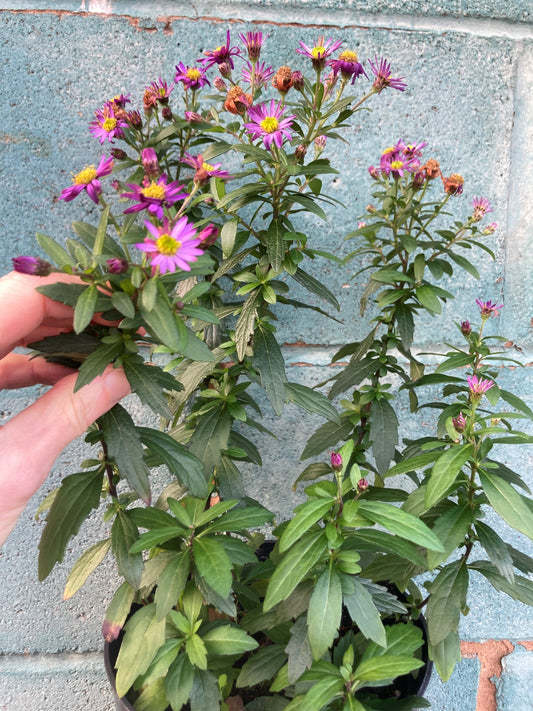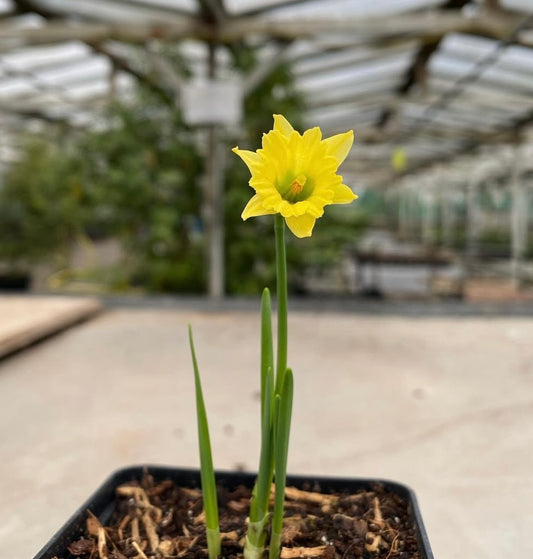Collection: Aster
Explore our Aster collection, featuring hardy, long-flowering perennials that bring vibrant colour to the garden from late summer through autumn. These low maintenance, pollinator friendly plants are perfect for borders, wildlife gardens, and naturalised settings, offering nectar-rich blooms that attract bees and butterflies.
-
ASTER AGERATOIDES 'EZO MURASAKI'
Regular price £15.00Regular priceUnit price / per -
ASTER AGERATOIDES 'ASHVI'
Regular price £9.00Regular priceUnit price / per
Asters - FAQs
What are asters?
Asters are a group of flowering plants belonging to the Asteraceae family, known for their daisy-like blooms that brighten gardens in late summer and autumn. These perennials are valued for their vibrant colours, which range from purple, blue, pink, and white, attracting bees, butterflies, and other pollinators.
How should I care for asters during winter?
Most asters are hardy perennials, meaning they survive UK winters without much fuss. However, here are some tips to keep them in top shape:
Leave the foliage intact until early spring – this protects the plant from frost damage.
Apply a layer of mulch (such as compost or bark chips) around the base of the plant to insulate the roots.
Cut back dead growth in early spring to encourage fresh, vigorous growth.
How can I collect and store aster seeds?
Collecting aster seeds is a great way to propagate new plants for free. Follow these steps:
Wait for the seed heads to dry out on the plant – they should turn brown and fluffy, similar to dandelions.
Snip off the seed heads and place them in a paper bag or on a dry surface indoors.
Separate the tiny seeds from the fluff by gently rubbing them.
Store the seeds in an envelope or airtight container in a cool, dry place.
Sow seeds in early spring for the best germination results, or store them over winter and plant in the following growing season.
Why are the lower leaves of my asters turning brown and dying?
It’s quite normal for the lower leaves of asters to turn brown and drop as the plant matures. However, if this happens too early, it could be due to:
Overwatering or underwatering – keep soil moist but not waterlogged.
Lack of sunlight – lower leaves often yellow in shaded areas.
Fungal diseases – good airflow and avoiding wet leaves can help prevent problems.
Regular deadheading and light pruning can help keep your asters looking fresh throughout the season.
Can I plant asters in autumn?
Yes, autumn is a great time to plant asters, as it allows them to establish roots before winter. When planting in autumn:
Choose a sheltered, sunny spot with well-draining soil.
Water well after planting, but avoid waterlogging.
Apply a mulch layer around the base to protect roots from frost.
If planting from a container-grown aster, make sure to tease out the roots gently before placing them in the ground. While asters can be planted in spring too, autumn planting gives them a head start for next year’s blooms.
What's trending?
Explore these 2025 bestsellers - proven favourites among UK gardeners, these plants have earned their place at the top.
-
NARCISSUS 'CEDRIC MORRIS'
Regular price £28.00Regular priceUnit price / per -
ASPIDISTRA ELATIOR 'LENNON'S SONG'
Regular price £29.00Regular priceUnit price / per -
KNIPHOFIA UVARIA 'NOBILIS'
Regular price £9.00Regular priceUnit price / per -
TULIPA SPRENGERI 'TROTTER'S FORM'
Regular price £9.00Regular priceUnit price / per£9.00Sale price £9.00








